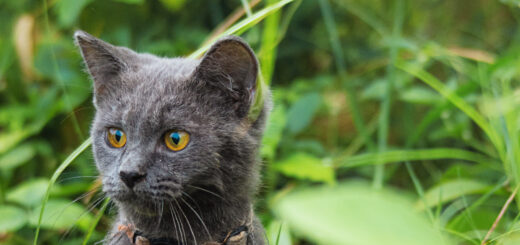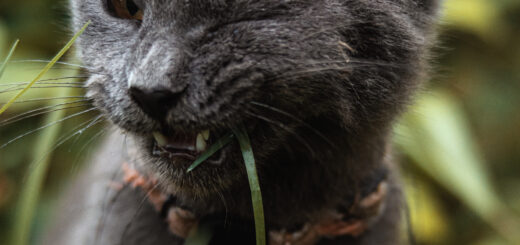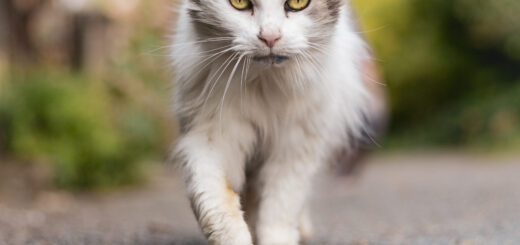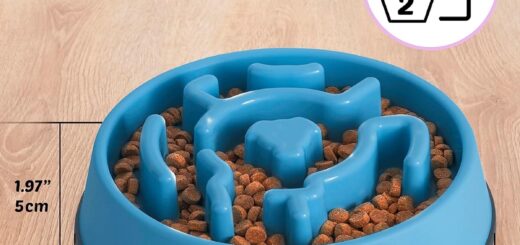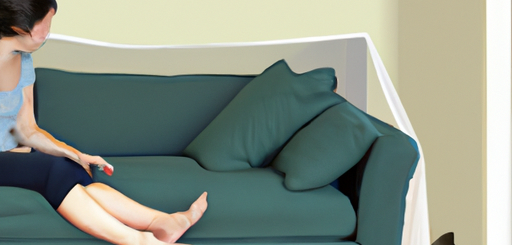Happy And Healthy: A Comprehensive Guide To Cat Nutrition
In “Happy And Healthy: A Comprehensive Guide To Cat Nutrition,” you will discover essential information on how to provide your feline friend with a balanced and nutritious diet. From understanding their dietary requirements to selecting the right cat food and incorporating healthy treats, this guide covers it all. Whether you are a new cat owner or looking to enhance your current feeding routine, this article will give you the knowledge and tips you need to promote your cat’s overall health and well-being.

This image is property of images.pexels.com.
Click here to Understand & Speak With Your Cat!
Understanding the Nutritional Needs of Cats
Cats are obligate carnivores
When it comes to cat nutrition, it’s important to understand that cats are obligate carnivores. Unlike humans and some other animals, cats have specific dietary requirements that must be met in order for them to thrive. Being obligate carnivores means that cats require a diet primarily based on meat. Their bodies have evolved to digest and utilize nutrients from animal sources more efficiently than plant-based foods. It’s essential to provide cats with the nutrients they need from their food in order to support their overall health and wellbeing.
Protein requirements
Protein plays a crucial role in a cat’s diet. It is the building block for muscle and is necessary for various metabolic processes. Cats have a higher protein requirement compared to other animals. Protein provides essential amino acids, which are the building blocks of protein. These amino acids are necessary for the growth, repair, and maintenance of tissues in a cat’s body. Feeding your cat a diet that is rich in high-quality animal proteins is key to meeting their unique protein requirements.
Essential amino acids
Cats require certain essential amino acids that cannot be synthesized by their bodies. These amino acids include taurine, arginine, and cysteine. Taurine, for example, is essential for proper heart and eye function in cats. It is predominantly found in animal tissue, so a meat-based diet is crucial for meeting a cat’s taurine needs. Ensuring that your cat’s diet is complete and balanced with all the essential amino acids is vital for their overall health and longevity.
Fats and fatty acids
While too much fat can lead to obesity, a moderate amount of dietary fat is important for cats’ overall health. Fats provide a concentrated source of energy, help with the absorption of fat-soluble vitamins, and contribute to the palatability of cat food. Additionally, fats are a source of essential fatty acids, such as omega-3 and omega-6 fatty acids. These fatty acids play a role in maintaining healthy skin and coat, supporting immune function, and reducing inflammation. Including a balanced amount of healthy fats in your cat’s diet can contribute to their overall wellbeing.
Carbohydrates in the feline diet
Unlike humans, cats do not have a strict requirement for carbohydrates in their diet. In the wild, cats consume very minimal carbohydrates as their primary source of energy comes from proteins and fats. However, some commercial cat foods do contain carbohydrates as a source of energy and to bind the kibble together. While cats do not need a high carbohydrate diet, it’s important to choose cat foods that contain complex carbohydrates, such as whole grains or vegetables, rather than simple carbohydrates. Complex carbohydrates offer more nutritional value and are less likely to cause spikes in blood sugar levels.
Choosing the Right Cat Food
Commercial cat food options
When it comes to choosing the right cat food, there are various options available on the market. You can choose between dry cat food (kibble), wet cat food (canned), or a combination of both. It’s important to select cat food that is specifically formulated to meet the nutritional needs of cats. Look for reputable brands that have undergone rigorous testing and quality control. Remember to read the labels and choose cat food that contains high-quality ingredients and is free from artificial additives or fillers.
Wet vs. dry cat food
Both wet and dry cat food have their own advantages and considerations. Wet cat food typically has a higher moisture content, which can help with hydration and urinary tract health. It is also generally more palatable for cats due to its texture and aroma. On the other hand, dry cat food is more convenient in terms of storage and portioning. It can also contribute to dental health by promoting chewing and reducing plaque buildup. Some cat owners choose to feed a combination of wet and dry cat food to provide their cat with a balanced diet.
Reading the cat food label
Reading the cat food label is essential in determining the quality and appropriateness of the food for your cat. Look for specific information such as the guaranteed analysis, which provides details about the levels of protein, fat, and carbohydrates in the food. Check the ingredient list and make sure that high-quality animal protein sources are listed at the top. Avoid cat foods that contain excessive amounts of fillers, artificial preservatives, and by-products. Familiarize yourself with the different terminology used on cat food labels to make informed decisions about your cat’s nutrition.
Understanding nutritional claims
Cat food labels often boast various nutritional claims, such as “grain-free,” “natural,” or “complete and balanced.” It’s important to understand what these claims mean and how they may affect your cat’s nutrition. Grain-free cat food, for example, is formulated without grains like corn or wheat, which may be beneficial for cats with specific dietary sensitivities. “Natural” cat food typically means that the ingredients used are minimally processed and free from artificial additives. Lastly, “complete and balanced” means that the food contains all the necessary nutrients in the appropriate proportions to meet a cat’s nutritional needs.

This image is property of images.pexels.com.
Click here to Understand & Speak With Your Cat!
Feeding a Balanced Diet
Feeding schedule
Establishing a regular feeding schedule for your cat is important for their overall health and wellbeing. Cats thrive on routine and having consistent meal times can help regulate their metabolism and digestion. It’s recommended to feed adult cats two small meals per day, while kittens may require three to four small meals. Avoid leaving food out all day as this can lead to overeating and obesity. Stick to the feeding schedule to ensure that your cat receives the appropriate amount of food each day.
Portion control
Portion control is critical to maintaining a healthy weight for your cat. Each cat is unique and their portion sizes may vary depending on factors such as age, activity level, and overall health. It’s best to consult with your veterinarian to determine the appropriate portion sizes for your cat. Measuring your cat’s meals using a kitchen scale or specific measuring cups can help prevent overfeeding.
Avoiding overfeeding
Overfeeding can lead to obesity, which can have serious health implications for your cat. Obesity increases the risk of various health issues, including diabetes, arthritis, and heart disease. Avoid overfeeding by following the portion sizes recommended by your veterinarian. It’s also important to resist the urge to give in to your cat’s begging behavior or excessive treats. Stick to a balanced feeding routine to keep your cat at a healthy weight.
Avoiding underfeeding
While overfeeding can be detrimental to a cat’s health, underfeeding can also have negative consequences. Cats need sufficient nutrients to support their basic bodily functions and maintain a healthy weight. Underfeeding can lead to malnutrition, muscle loss, and a weakened immune system. It’s crucial to provide your cat with an appropriate amount of food to meet their nutritional needs. If you are unsure about the right portion size for your cat, consult with your veterinarian for guidance.
Special considerations for kittens, adult cats, and senior cats
Different life stages require different nutritional considerations for cats. Kittens, for example, have higher energy and nutrient requirements compared to adult cats. They need food that is specifically formulated for growth and development. Adult cats benefit from a balanced diet that supports their maintenance needs. As cats age, their nutritional requirements may change, and senior cat foods may be necessary to address their specific needs, such as joint health or dental care. Consult with your veterinarian to ensure that your cat’s diet is appropriate for their life stage.
The Role of Water in Cat Nutrition
Importance of hydration
Water is essential for cats, just as it is for all living beings. Adequate hydration is crucial for maintaining proper kidney function, digestion, and overall health. Cats have a relatively low thirst drive compared to other animals, which can put them at higher risk of dehydration. Ensuring that your cat has access to fresh, clean water at all times is vital to their hydration.
Providing fresh water
Cats are more likely to drink water if it is fresh, clean, and readily available. It’s important to provide your cat with a clean water bowl and refill it with fresh water daily. Some cats are sensitive to the taste or temperature of water, so experimenting with different water sources or using a water fountain may encourage them to drink more. Monitor your cat’s water intake and contact your veterinarian if you notice any significant changes or signs of dehydration.
Ensuring water intake
If your cat is not drinking enough water, there are several strategies you can try to increase their water intake. One option is to incorporate wet cat food into their diet, as it has a higher moisture content compared to dry kibble. Another option is to add water or low-sodium broth to your cat’s meals to increase their overall water consumption. Some cat owners also find success in offering multiple water bowls throughout the house or using elevated water dishes to encourage drinking. Experiment with different methods to find what works best for your cat’s hydration needs.

This image is property of images.pexels.com.
Click here to Understand & Speak With Your Cat!
Common Nutritional Health Issues in Cats
Obesity and overweight
Obesity is a common nutritional health issue in cats and can have serious implications for their overall wellbeing. Overfeeding, lack of exercise, and an imbalanced diet can contribute to obesity in cats. Maintaining a healthy weight is important to prevent other health issues such as diabetes, arthritis, and heart disease. Regularly monitor your cat’s weight and body condition, and adjust their diet and exercise routine accordingly with guidance from your veterinarian.
Urinary tract health
Urinary tract issues, such as urinary tract infections and the formation of urinary crystals or stones, are common in cats. Nutrition plays a vital role in maintaining urinary tract health. Feeding your cat a diet that promotes a slightly acidic urine pH and provides adequate moisture can help prevent urinary tract issues. Consult with your veterinarian to determine the best diet for your cat’s urinary health needs.
Skin and coat problems
A healthy, glossy coat is a sign of good overall health in cats. Skin and coat problems, such as dry skin, excessive shedding, or a dull coat, may indicate underlying nutritional deficiencies. Ensuring that your cat’s diet provides the appropriate balance of essential fatty acids, vitamins, and minerals can promote a healthy skin and coat. If your cat experiences persistent skin or coat issues, consult with your veterinarian to rule out any underlying medical conditions.
Digestive issues
Digestive issues, such as diarrhea, vomiting, or gastrointestinal upset, can be caused by various factors, including improper nutrition. Cats may have sensitivities or allergies to certain ingredients in their food, leading to digestive disturbances. Additionally, a diet that lacks sufficient fiber or contains low-quality ingredients may contribute to digestive issues. If your cat experiences chronic digestive problems, consult with your veterinarian to determine if a change in diet or further investigations are necessary.
The Benefits of Homemade Cat Food
Pros and cons of homemade cat food
Some cat owners choose to prepare homemade cat food to ensure the quality and control the ingredients in their cat’s diet. Homemade cat food can offer the benefit of using high-quality, fresh ingredients and tailoring the diet to your cat’s specific needs. However, preparing homemade cat food requires careful attention to provide all the necessary nutrients in the right proportions. It can also be time-consuming and may require additional supplementation. Consult with a veterinary nutritionist to get expert guidance on preparing balanced homemade cat food for your cat.
Consulting a veterinary nutritionist
If you are considering feeding your cat homemade cat food, it is highly recommended to consult with a veterinary nutritionist. Veterinary nutritionists are experts in formulating complete and balanced diets specifically for cats. They can help you develop a recipe that meets all of your cat’s nutritional needs and address any specific health concerns. Working with a veterinary nutritionist can ensure that your cat’s homemade diet is safe, nutritionally optimal, and tailored to their individual requirements.
Recipe ideas for homemade cat food
If you have decided to prepare homemade cat food for your furry friend, here are a few recipe ideas to get you started. Remember to consult with a veterinary nutritionist to ensure that the recipes meet your cat’s specific nutritional needs:
-
Chicken and vegetable stew: Combine cooked chicken, mixed vegetables, and a small amount of cooked rice or quinoa for a balanced meal.
-
Fish and pumpkin mash: Mash together cooked fish, canned pumpkin, and a small amount of olive oil for a nutritious and flavorful meal.
-
Beef and sweet potato mix: Cook lean beef, dice it into small pieces, and mix it with cooked sweet potatoes and a sprinkle of taurine supplement for a well-rounded meal.
It’s crucial to follow a recipe created by a veterinary nutritionist to ensure that all the necessary nutrients are included in the right proportions.
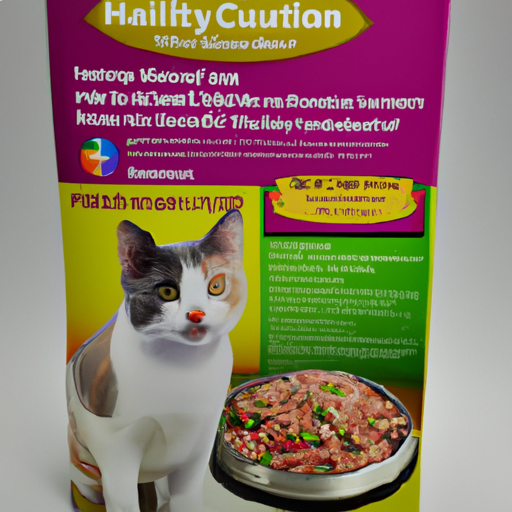
Click here to Understand & Speak With Your Cat!
Supplements for Optimal Cat Nutrition
Understanding the role of supplements
Supplements can be beneficial in certain situations when a cat’s diet may be lacking in certain nutrients or when they have specific health conditions. However, supplements should not be used as a substitute for a balanced diet. It’s important to understand the role of supplements and consult with your veterinarian before giving any to your cat. They can guide you on appropriate supplements and dosages based on your cat’s individual needs.
Types of supplements for cats
There are various supplements available for cats, each with its own specific purpose. Some common types of supplements include:
-
Omega-3 fatty acids: These supplements can support a healthy skin and coat, promote joint health, and reduce inflammation.
-
Probiotics: Probiotics can help maintain a healthy gut flora and support digestive health in cats.
-
Vitamins and minerals: Certain vitamins and minerals may be recommended as supplements for cats with specific nutritional deficiencies or health conditions.
It’s important to only give supplements that are specifically recommended by your veterinarian and to follow their instructions regarding dosage and duration.
Recommended dosage and frequency
The recommended dosage and frequency of supplements can vary depending on various factors, including the cat’s age, health status, and the specific supplement being used. Always consult with your veterinarian to determine the appropriate dosage and frequency for your cat. It’s important to follow their instructions to ensure that your cat is receiving the correct amount of the supplement and to avoid any potential side effects or interactions with other medications.
Food Allergies and Intolerances in Cats
Identifying food allergies
Food allergies occur when a cat’s immune system reacts negatively to certain ingredients in their diet. Common signs of food allergies in cats include itching, gastrointestinal upset, and skin problems. Identifying food allergies can be challenging as the symptoms can overlap with other health issues. If you suspect your cat has a food allergy, it’s best to work with your veterinarian to conduct an elimination diet or perform specific diagnostic tests to pinpoint the allergen.
Common food allergens
While any ingredient can potentially cause an allergic reaction in cats, some common food allergens include:
-
Chicken: Chicken is a common allergen for cats and can cause skin irritations and gastrointestinal issues.
-
Fish: Fish, particularly salmon and tuna, can trigger allergic reactions in some cats.
-
Dairy: Cats are lactose intolerant and have difficulty digesting dairy products, which can lead to digestive disturbances.
-
Grain ingredients: Grains such as corn, wheat, and soy are common allergens for cats.
It’s important to carefully read the ingredient labels and avoid feeding your cat foods that contain known allergens.
Elimination diet
An elimination diet is a process of systematically removing potential allergens from a cat’s diet to determine which ingredient(s) may be causing the allergic reaction. Your veterinarian can guide you on conducting an elimination diet for your cat. This may involve feeding a novel protein source, such as venison or rabbit, along with a novel carbohydrate source, such as sweet potato or peas. After a period of strict elimination, ingredients can be reintroduced one at a time to identify any allergic reactions.
Alternative protein sources
If your cat has food allergies or sensitivities, it may be necessary to find alternative protein sources that are less likely to cause allergic reactions. Some examples of alternative protein sources for cats include duck, turkey, rabbit, or novel plant-based proteins like pea protein. Working with your veterinarian or a veterinary nutritionist can help identify suitable alternative protein sources and formulate a balanced diet for your cat’s unique needs.
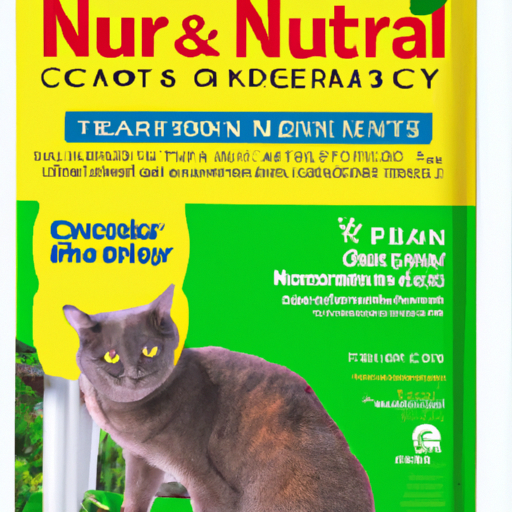
Click here to Understand & Speak With Your Cat!
Transitioning to a New Cat Food
Why a gradual transition is important
When introducing a new cat food, it’s important to transition gradually to avoid digestive upset. Cats have sensitive digestive systems, and abrupt changes in their diet can lead to diarrhea or vomiting. By gradually introducing the new food and slowly reducing the old food, you allow your cat’s digestive system to adapt to the dietary change more easily. A gradual transition usually takes about 7 to 10 days, but the timeline may vary depending on your cat’s individual tolerance.
Tips for a smooth transition
To transition your cat to a new food successfully, follow these tips:
-
Start by mixing a small amount of the new food with the old food. Gradually increase the proportion of the new food over several days.
-
Observe your cat’s response to the new food. If they experience any digestive issues or adverse reactions, consult with your veterinarian.
-
Avoid mixing multiple new foods together at once. Transition one food at a time to identify any potential allergies or intolerances.
-
If your cat refuses to eat the new food, try different formulations or flavors to find one they enjoy. Consult with your veterinarian for further guidance if needed.
Monitoring your cat’s response
During the transition period, it’s important to closely monitor your cat’s response to the new food. Keep an eye out for any changes in their appetite, stool consistency, coat condition, or overall behavior. If you notice any significant negative reactions or persistent issues, consult with your veterinarian. They can provide further guidance on adjusting the transition process or selecting a different cat food that better suits your cat’s needs.
Consulting with a Veterinarian
The importance of professional advice
When it comes to your cat’s nutrition, it’s always best to seek professional advice from a veterinarian. They have the knowledge and expertise to assess your cat’s specific needs and guide you on providing a balanced and appropriate diet. A veterinarian can help address any specific health concerns, recommend suitable cat food options, and provide guidelines for portion control and feeding practices. Regular check-ups and consultations with your veterinarian can ensure that your cat’s nutritional needs are being met throughout their life.
Questions to ask your vet
When consulting with your veterinarian about your cat’s nutrition, consider asking the following questions:
-
What is the ideal body condition score for my cat, and how can I maintain it through diet?
-
Which commercial cat food brands do you recommend, and what should I look for in their ingredient lists?
-
Should I choose wet or dry cat food for my cat, or a combination of both?
-
Are there any specific nutritional considerations I should be aware of for my cat’s breed, age, or health condition?
-
Can you recommend any additional supplements or vitamins to support my cat’s overall health?
By engaging in open and honest communication with your veterinarian, you can ensure that you have all the information and support you need to provide your cat with a nutritionally balanced and fulfilling diet.
In conclusion, understanding the nutritional needs of cats is vital to ensure their overall health and wellbeing. Cats have specific dietary requirements as obligate carnivores, and their diets should primarily consist of high-quality animal protein. Protein, essential amino acids, fats, and fatty acids are key nutrients for cats, while carbohydrates are not a strict dietary requirement. When choosing the right cat food, consider commercial options and read the labels to ensure they are complete and balanced. Feeding a balanced diet involves establishing a feeding schedule, practicing portion control, and considering the specific needs of kittens, adult cats, and senior cats. Adequate hydration through fresh water is crucial for cats’ health, and monitoring water intake is important. Obesity, urinary tract health, skin and coat problems, and digestive issues are common nutritional health issues in cats. Homemade cat food can be an option but should be approached with caution and under the guidance of a veterinary nutritionist. Supplements may be beneficial but should be recommended by a veterinarian. Food allergies and intolerances can occur, and a gradual transition to a new cat food is important. Finally, consulting with a veterinarian is essential in ensuring your cat’s nutritional needs are met and addressing any concerns or questions you may have. By providing a nutritionally balanced diet, you can contribute to your cat’s happy and healthy life.


